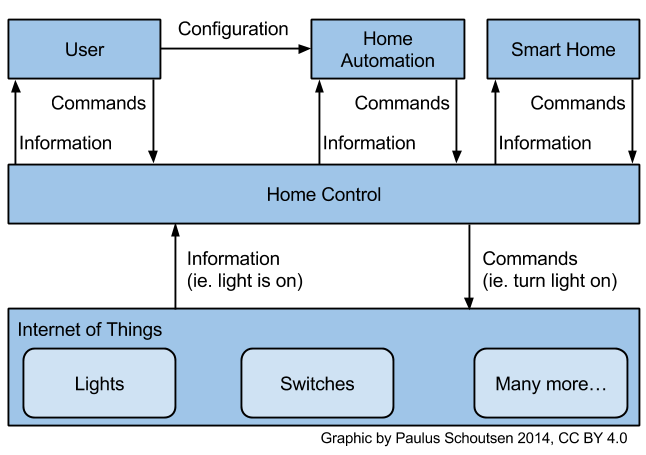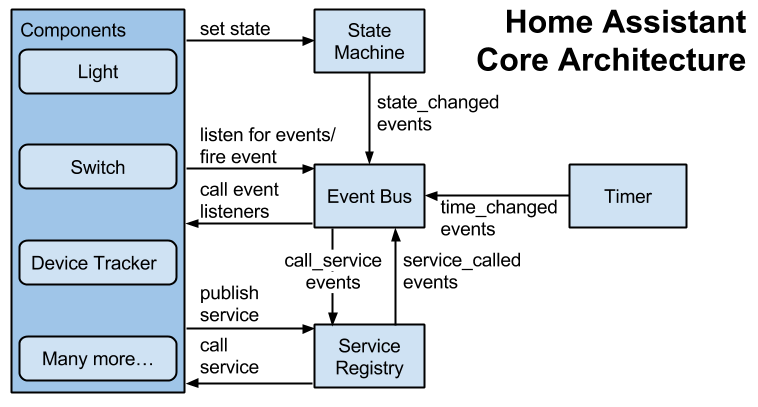Architecture
Before we dive into the Home Assistant architecture, let’s get a clear overview of the home automation landscape as a whole. This way, we can show how the different parts of Home Assistant fit into the picture.
For more information about each part in this overview, check out our blog. Here’s the tl;dr version of the blog:
- Home Control is responsible for collecting information and controlling devices.
- Home Automation triggers commands based on user configurations.
- Smart Home triggers commands based on previous behaviour.
 Overview of the home automation landscape
Overview of the home automation landscape
The Home Assistant core is responsible for Home Control. Home Assistant contains four parts which make this possible:
- Event Bus: facilitates the firing and listening of events – the beating heart of Home Assistant.
- State Machine: keeps track of the states of things and fires a
state_changedevent when a state has been changed. - Service Registry: listens on the event bus for
call_serviceevents and allows other code to register services. - Timer: sends a
time_changedevent every 1 second on the event bus.
